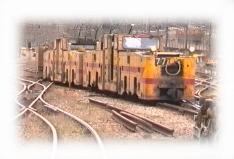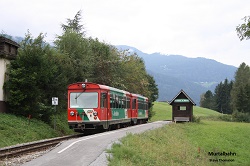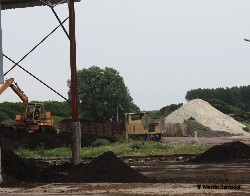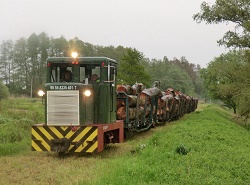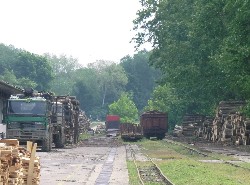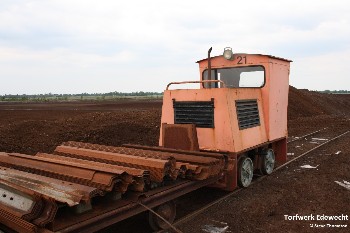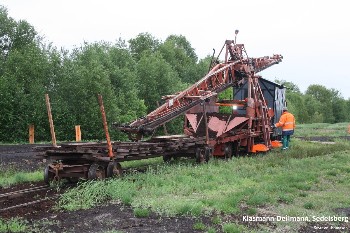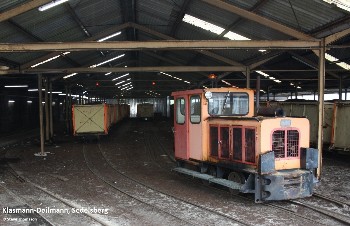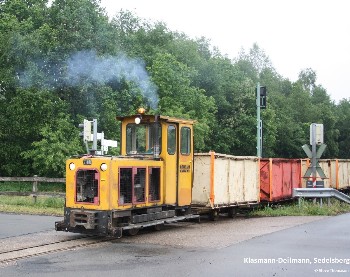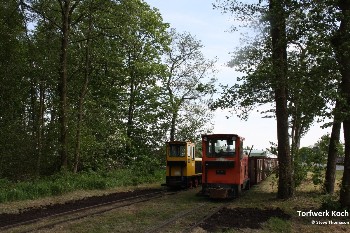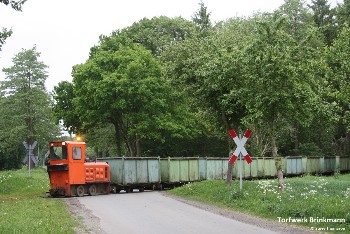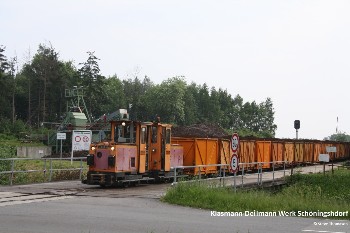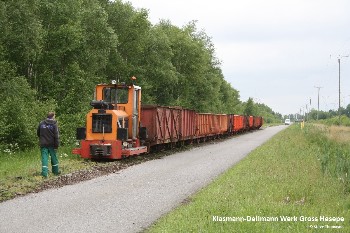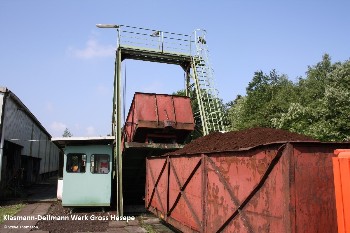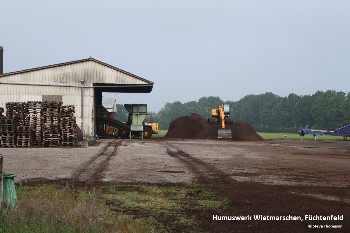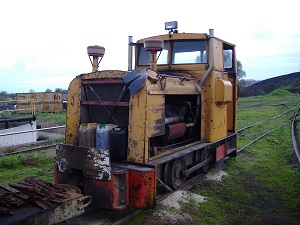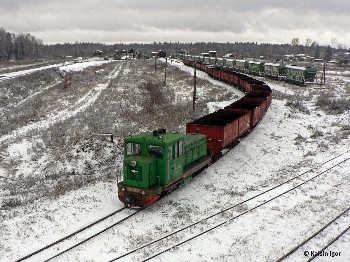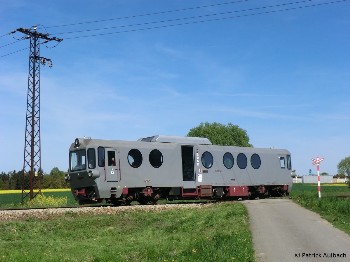GERMANY: May 2016
Exxon Mobil and Jan Kwade, Rühlermoor
(Gauge 900mm) The restricted area of Ruhlermoor to the north and south of the road from Rühlertwist to Rühlerfeld still continues to be operated by Klasmann-Deilmann and the oil and gas companies. There are over 100 oil well heads with each one pumped by a nodding donkey. Every one of these has a siding off the main line to allow rail mounted vehicles access right up to the well head.
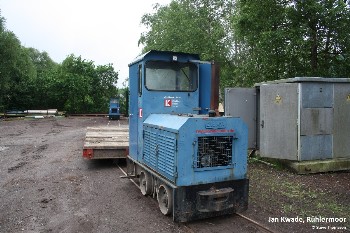
The photo above shows 2 of the Jan Kwade operated Diema locos. THe third was in use out on the moor.
there is a network of lightly laid roads across the moors which are not usually accesible by the public (apart from a cycleway route). No heavy road vehicles are allowed on the roads because of the unstable nature of the surface, so everything is moved by rail. Every day from early morning, at least 6 locos can be in use by Exxon Mobil and Jan Kwade around the site.
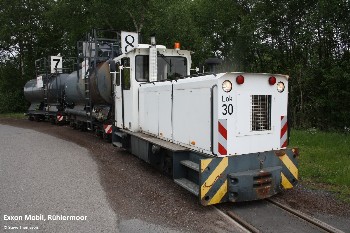
No.30, a Schöma CHL-60G is the largest type of loco on the site, seen here with 2 of the hot water tank wagons.
|
Many of the small peat fields in between the lines of oil wells are harvested by Klasmann-Deilmann, and during the visit both the Gross Hesepe and the Schöninghdorf peat trains were operating inside this area.
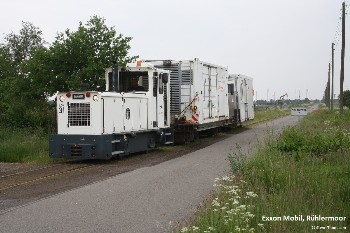
Loco 31 is a newer sister loco to No.30, seen here transporting some support vehicles back to the Exxon Mobil yard after a day's work.
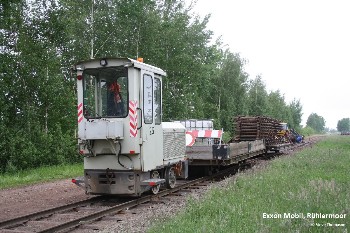
No.25 is a CHL-30G seen in charge of a track laying train for the moors. With the length of running line, the amount of pointwork, and the heavy use the network gets on a daily basis, track maintenance is a full time activity.
|
When visited over a couple of days, all work appeared to cease each day by 15:00, and so a lot of the locos return to the compounds around this time, easily observed via a number of road crossings in the area. On Fridays, the closing time seemed to be around lunchtime.
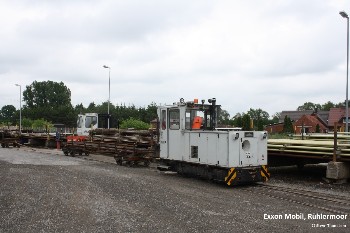
Schöma No.32 in the above photo, was the newest loco seen on the site and as with most of the new Schöma locos is able to remotely controlled by the driver. It is seen transporting spare oil pipes which are transported between pairs of bogies. The pipes are loaded and unloaded in the Exxon Mobil compound then taken to the required oil well.
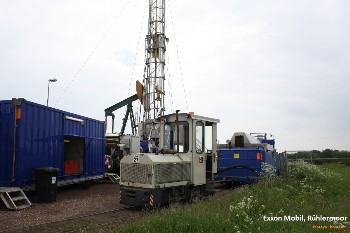
No.27 is another CHL-30G loco, captured at a well head with a drilling rig and support vehicles, all rail mounted.
|
